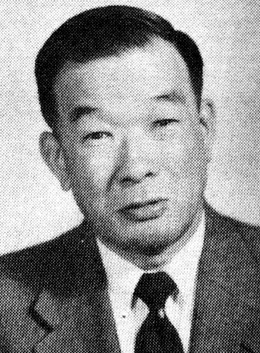Kichio Allen Arai was Seattle's first Asian American architect to design buildings under his own name. His approach integrated Japanese aesthetics with American conventions. Arai's career was unfortunately brief, for the Great Depression and then his forced relocation and incarceration along with others of Japanese ancestry during World War II stymied his potentially fruitful professional life in architecture. He is best known for Buddhist temples in Seattle, Auburn, and Wapato.
UW Student
Born in Port Blakely, Arai moved to Seattle with his family in 1909. He enrolled in the University of Washington's architecture program in 1919 and graduated six years later with a bachelors degree. Upon graduating, he began his professional career within the firm of Schack, Young and Myers, one of Seattle's most prolific architectural and engineering firms operating in the early twentieth century.
Arai soon left to pursue a graduate degree in architecture from Harvard. Such an achievement was unusual for Seattle architects practicing before World War II. He returned in the 1930s to an economic and political environment that negatively affected his success as a professional architect. The Great Depression afforded little work for established architects in Seattle. Relative newcomers and minorities faired even worse. A career in semiprofessional baseball offset Arai's spotty practice during the 1930s. The Yakima Buddhist Bussei Kaikan (1936-1941), on West 2nd Street in Wapato, was one of the few noteworthy buildings attributed to Arai at this time. It was built by members of the congregation, and was not completed until after World War II.
The Japanese bombing of Pearl Harbor generated widespread anti-Asian sentiment in the United States. Interment camps drained the Pacific Coast's Japanese American community, including Arai and the congregation of the Yakima temple. In the spring of 1942, the United States Army removed more than 100,000 residents of Japanese ancestry from their homes in Washington, Oregon, California, Arizona, and Alaska, and sent them to nearby temporary assembly centers. From there, trains took them to concentration camps in isolated parts of the country, many for the duration of the war.
The Army interned Arai and his family at a pivotal point in the young architect's career. In 1940, he received a commission for the new Seattle Buddhist Church, to be built at 1427 South Main Street in the International District. Construction began in late 1940; the building was dedicated on October 5, 1941. Arai was forced to leave Seattle only months later, unable to enjoy the positive momentum generated by this important work. He returned in February 1947 and found work within a few local firms, generally working as an associate.
His life work consisted of few executed buildings. Arai's extant designs illustrate the architect's interest in traditional Japanese architecture. The Seattle Buddhist Church (1940-1941) illustrates the methods by which Arai combined traditional Japanese design with American building techniques and materials. The recognizably Asian upturned projecting eaves of the building's shingled roof contrast with the typically American brickwork on the building's facade. The latticework within the building's front gable, and the decorative designs accentuating its cornice, or gabled roofline, suggest Eastern precedent. Other works by Arai include:
- Seattle's Nichiren Buddhist Church (1928-1929) and its garage (1933)
- The Idaho-Oregon Buddhist Temple (1955-1958) of Ontario, Oregon
- The White River Buddhist Temple (1963-1964; associate) in Auburn, Washington
- The Shinran Shonin 700th Anniversary Memorial Hall addition to the Seattle Buddhist Church (1963-1964; associate).
Each of these works describes Arai's distinctive Japanese American approach. Many of his designs remain within Seattle, testament to the strength and adaptability of the Asian community after World War II.

